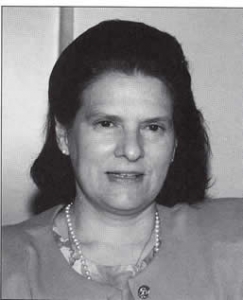Transplantation – heart-lung, double lung and living donor
1985 (1990) Yacoub MH, Banner NR, Khaghani A, FitzGerald M, Madden B, Tsang V, Hodson M. Heart-lung transplantation for cystic fibrosis and subsequent domino heart transplantation. J Heart Transplant 1990; 9:459-467. [PubMed]

Magdi Yacoub
A major advance, for those who had reached the end stages of their disease (an FEV1 predicted of less than 30%), was the successful introduction of heart-lung transplantation in 1985, pioneered by Sir Magdi Yacoub (figure 29 main text) and his team in London (Yacoub et al, 1990; Scott et al, 1988 below) and Mr John Wallwork and his team in Cambridge. The possibility of successful treatment in what were previously the terminal stages of the condition had a major influence on both prognosis and the treatment of severely affected individuals.
The first results of heart-lung transplantations were quite remarkable and were related both to surgical skills, concentrated medical expertise in assessment and after care and also to more successful immunosuppressive therapy to prevent rejection of the transplanted organs. Later double lung transplants became more popular (Pasque et al, 1990 below) and are now the most commonly performed operation. Living donor lung transplants have proved successful in some centres and will be an obvious choice for some families in the absence of suitable donor organs (Cohen & Starnes, 2001 below).

Andrea Penketh
1987 Penketh A, Higenbottam T, Hakim M, Wallwork J. Heart lung transplantation in patients with end stage lung disease. BMJ 1987; 295:311-314. [PubMed]
The cardiothoracic surgical team at Papworth, Cambridge UK under the leadership of Mr John Wallwork report preliminary results of heart-lung transplantation in seven patients one of whom had CF. Six of the seven patients were well after four to 33 months. Papworth became one of the major UK transplant centres for people with cystic fibrosis.PubMed]). The first heart lung transplants for CF were performed by Mr. Magdi Yacoub in 1985 in London at Harefields Hospital (Yacoub et al, 1990 below).
1988 Jones K, Higenbottam T, Wallwork J. Successful heart-lung transplantation for cystic fibrosis. Chest 1988; 93:644-5. [PubMed]

John Wallwork
Report of one of the first successful heart lung transplants in CF in October 1985 by Mr Wallwork’s team at Papworth Hospital, Cambridge. Sixteen months after heart-lung transplantation, the FEV1 of a young woman, who had been in the terminal stages of CF, has risen from 16 percent (0.6 L) to 77 percent of her predicted value. She had returned to work. <
These first reports of heart lung transplantation for a condition which was uniformly fatal were quite dramatic and excited a great deal of hope and interest in the CF community. John Wallwork and Magdi Yacoub were leaders in this field in the UK for the next few years. (also Penketh et al above; Scott J et al. Heart lung transplantation for cystic fibrosis. Lancet 1988; ii: 192-194 reporting five of six patients with CF survived heart lung transplantation at Papworth Hospital). Later Prof John Dark and Prof Paul Corris in Newcastle developed a major transplant service.
1990 Pasque MK, Cooper JD, Kaiser LR, Haydock DA, Triantafillou A, Trulock EP. Improved technique

Michael Pasque
for bilateral lung transplantation: rationale and initial clinical experience. Ann Thorac Surg 1990; 49:785-791. [PubMed]
The first bilateral lung transplantation in CF was performed in Toronto in 1988 and 17 were carried out between 1988 and 1991 (Ramirez JC et al. J Thorac Cardiovasc Surg 1992; 103:287-293). [PubMed]This improved operation was done through a transverse thoracosternotomy and involves sequential replacement of the two lungs. Positive features included separate bronchial anastomoses to reduce ischemic airway complications and elimination of the need for total cardiopulmonary bypass. Three patients were reported, one had CF, all recovered without complications and post operative function was excellent.
1990 Yacoub M, Banner NR, Khaghani A, Fitzgerald M, Madden B, Tsang V, Smyth R, Hodson ME. Heart lung transplantation for CF and subsequent domino cardiac transplantation. J Heart Transplantation 1990; 9:459-67. [PubMed]

Margaret Hodson
Between September 1984 and October 1988, 27 patients underwent combined heart-lung transplantation for treatment of end-stage respiratory disease caused by CF: survival was 78% at 1 year and 72% at 2 years. Lung function was greatly improved after transplantation, and long-term survivors achieved an excellent quality of life. Lymphoproliferative disorders developed in two patients; these disorders regressed after a reduction in immunosuppression. Two patients required retransplantation: one because of obliterative bronchiolitis and the other because of recurrent respiratory infections associated with a moderate tracheal stenosis and severe deterioration in lung function. A modification of the technique used for heart-lung transplantation allowed 20 hearts from cystic fibrosis patients to be used for subsequent heart transplantation. <
This report by Mr Yacoub and his team, who performed the first heart lung transplantations in people with CF at Harefields Hospital, London in 1984. Margaret Hodson provided the main medical input to the transplant programme. There were also reports from Mr Wallwork’s unit at Papworth, Cambridge (Penketh et al, 1987 above; Jones et al, 1988 above and later from Professors Dark and Paul Corrie from Newcastle) <
1991 Hodson ME, Madden BP, Steven MH, Tsang VT, Yacoub MH. Non-invasive mechanical ventilation of CF patients – the bridge to transplantation. Eur Resp J 1991; 4:524-7. [PubMed]
This technique of non-invasive ventilation was developed as a direct result of attempting to prolong the survival of people with CF awaiting a heart-lung transplant at the Brompton Hospital – prior to the possibility of heart-lung transplantation assisted ventilation was usually regarded as inappropriate for people with CF in respiratory failure as their prognosis was uniformly bad. The case histories of six patients with CF using nasal ventilation while awaiting heart-lung transplantation are reviewed; four patients did well. This method of ventilation proved to be a useful bridge to transplantation when a patient suddenly deteriorates. This is also a very cost effective method of ventilation and does not encroach on conventional Intensive Care Unit facilities.
1991 Warner JO. Heart-lung transplantation: all the facts. Arch Dis Child 1991; 66:1013-1017. [PubMed]
John Warner, then paediatrician at the Brompton Hospital, London, wrote this cautionary article on heart lung transplantation as it applied to children in the UK and called for open discussion on the subject. His article was published alongside two papers on heart-lung transplantation in children from Great Ormond Street (Whitehead B et al. Arch Dis Child 1991;66;1018-1021.[PubMed] & Whitehead B et al, Arch Dis Child 1991; 66:1022-1026.[PubMed] ). Of 27 children referred to GOS for assessment of suitability for heart-lung transplant, 10 (37%) were actually transplanted. Six were still alive from three months to three years after the operation but two thirds of the cohort had died at various stages during referral, assessment, and transplant.
Warner maintained that while the transplant has offered miraculous new life to a few children, many more have experienced increased and unnecessary suffering. Planning of transplant programmes must take all facts into account. Also Warner emphasised that the possibility of heart-lung transplant must not deter further efforts to control chronic lung diseases medically and must not influence appropriate terminal care.
These were early days for transplantation (the first adults had only received transplants in 1984), and although there were some similar views, the latest being in 2008, the outlook for children having transplants continued to improve although as for older patients shortage of donor organs remained a problem.
Sonny Laing’s CF was not diagnosed until she was 18 months old when she was referred to Leeds by which time her lungs were irreparably severely damaged. She was the youngest child with CF to receive a heart-lung transplant at Great Ormond Street, London when she was 5 years old. In the figure (in main text) she is 15 years old, very well, active and a keen gymnast. After a very active life Sonny died aged 25 years.
1992 Madden BP, Hodson ME, Tsang V, Radley-Smith R, Khaghani A, Yacoub MY. Intermediate term results of heart-lung transplantation for cystic fibrosis. Lancet 1992; 339:1583-1587. [PubMed]
Between 1984 and 1991 79 patients with CF had heart-lung transplantations in London by Mr Yacoub’s team with a 69% survival to 1 year, 52% to 2 yrs and 49% to 3 years. Cumulative probability of development of obliterative bronchitis was 17%, 23% and 48% at 1, 2, and 3 years. These were encouraging results but the authors noted serious shortage of donor organs – which in 2008 was still a major problem in the UK (Penketh et al, 1987 above; Yacoub et al, 1990 above; Scott et al, 1988 above for first reports from Brompton and Harefields and Cambridge).
2000 Goldstein AB, Goldstein LS, Perl MK, Haug MT, Arroliga AC, Stillwell PC. Cystic fibrosis patients with and without central nervous system complications following lung transplantation. Pediatr Pulmonol 2000; 30:203-206). [PubMed]
Eleven of 21 patients (52%) with CF had CNS events after lung transplantation: eight had seizures, five severe headaches, three had strokes, and one had a confusional episode. The authors could not identify any predictive risk factors but considered cyclosporine toxicity to be the major cause of the CNS complications. Despite the high rate of CNS events, the overall prognosis for these patients was good, and their 6-month survival was not affected.
A surprisingly high percentage of people with CF have neurological problems after lung transplantation. CNS complications are not common in CF but Arnold-Chiari malformations have been reported (Needleman JP et al. Pediatr Pulmonol 2000; 30:490 above).
2001 Cohen RG, Starnes VA. Living donor lung transplantation. World J Surg 2001; 25: 244-250. [PubMed]

Vaughn Starnes
Since 1993 a total of 101 living-donor bilateral lung transplants had been performed with acceptable results. Though most recipients were patients with CF who were rapidly deteriorating, the indications for live-donor lung transplantation had been expanded to include some CF patients in a more elective setting, as well as select patients with other end-stage pulmonary diseases. One-year Kaplan-Meier recipient survival is 72%. Seventy-six percent of deaths occur within the first 2 months after transplantation. There has been no donor mortality and 83% had no problems. [PubMed]). Eighty-seven transplants were performed on 84 adult recipients from 1993 through 2003 – 76 had cystic fibrosis. Starnes had been publishing on the subject of living donor lung transplants since 1996. The technique has not become popular in the UK.
2002 Augarten A, Goldman R, Laufer J, Szeinberg A, Efrati O, Barak A, Miller MS, Yahav Y. Reversal of digital clubbing after lung transplantation in cystic fibrosis patients: a clue to the pathogenesis clubbing. Pediatr Pulmonol 2002; 34:378-380. [PubMed]
Digital clubbing is a common sign in cystic fibrosis and in a variety of other diseases. However, its pathogenesis remains obscure. In diseases other than CF, regression of clubbing has been noted after cure of the underlying disease. The aim of this study was to assess whether clubbing is reversible in CF patients after lung transplantation. Digital clubbing was investigated in 3 CF patients, prior to and after lung transplantation.
The authors conclude that digital clubbing is reversible in CF patients who undergo lung transplantation. Regression was usually noted during the first 3 months post transplantation. This could be explained either by adequate inactivation of a circulating “clubbing-inducing molecule”(!) by the normal transplanted lungs, or by removal of the diseased lungs in which this presumably causative substance was produced.
The reversal clubbing was noted by some of the people with CF who had the first transplants in the Eighties. This paper merely confirms that clubbing may regress after lung transplantation.
2003 Date H, Aoe M, Nagahiro I, Sano Y, Andou A, Matsubara H, Goto K, Tedoriya T, Shimizu N. Living-donor lobar lung transplantation for various lung diseases. J Thorac Cardiov Sur 2003; 126:476-481. [PubMed] This paper from Okayama Japan reports experience in living-donor lobar lung transplantation for patients with various lung diseases including restrictive, obstructive, septic, and hypertensive lung diseases. From October 1998 to March 2002, living-donor lobar lung transplantation was performed in 14 patients with end-stage lung diseases. Diagnoses included primary pulmonary hypertension (n = 6), idiopathic interstitial pneumonia (n = 2), bronchiolitis obliterans (n = 2), bronchiectasis (n = 2), lymphangioleiomyomatosis (n = 1), and cystic fibrosis (n = 1). Bilateral living-donor lobar lung transplantation was performed in 13 patients and right single living-donor lobar lung transplantation was performed for a 10-year-old boy with primary pulmonary hypertension. All the 14 patients are currently alive with a follow-up period of 4 to 45 months. Although their forced vital capacity (1327 +/- 78 mL, 50.2% of predicted) was limited at discharge, arterial oxygen tension on room air (98.5 +/- 1.8 mm Hg) and systolic pulmonary artery pressure (24.8 +/- 1.6 mm Hg) were excellent. Forced vital capacity improved gradually and reached 1894 +/- 99 mL, 67.4% of predicted, at 1 year. All donors have returned to their previous lifestyles. The authors suggest that living-donor lobar lung transplantation can be applied to restrictive, obstructive, septic, and hypertensive lung diseases. This type of procedure can be an alternative to conventional cadaveric lung transplantation for both pediatric and adult patients who would die soon otherwise.
This is an interesting paper for Japan with obvious success with this procedure of which there are few reports other than the work from Starnes group in 2001 and subsequently in 2004 from San Diego.
2003 Gilljam M, Chaparro C, Tullis E, Chan C, Keshavjee S, Hutcheon M. GI complications after lung transplantation in patients with cystic fibrosis. Chest. 2003; 123:37-41. [PubMed] Lung transplantation is now available for patients with cystic fibrosis (CF) and end-stage lung disease. While pulmonary graft function is often considered the major priority following transplantation, the non pulmonary complications of this systemic disease also continue. GI complications after lung transplantation were common in patients with CF, and the authors advised that attention should be paid to the risk for DIOS in the early postoperative period. Prevention and early medical treatment are important in order to avoid acute surgery. Close collaboration with the CF clinic, in order to diagnose and treat CF-related complications, is recommended. The gastrointestinal aspects of treatment may receive insufficient attention if there are serious respiratory problems. This report of extensive experience from Toronto of patient after lung transplantations documents this advice and records experience of 27 of 75 patients. The present writer is aware of an instance where failure to give enzymes in the post operative period resulted in intestinal obstruction then complications with resulting fluid and parenteral nutrition eventually leading to fatal systemic infection.
2004 Bech B, Pressler T, Iversen M, Carlsen J, Milman N, Eliasen K, Perko M, Arendrup H. Long-term outcome of lung transplantation for cystic fibrosis – Danish results. Eur J Cardio-Thor Surg 2004; 26:1180-1186. [PubMed] In a 10-year period, 47 patients with CF were listed for lung transplantation; 29 patients underwent transplantation and 18 patients died while waiting for donor organs. Eleven patients received en block double lung transplantation with direct bronchial artery revascularization and 18 patients received bilateral sequential lung transplantation. Median age at transplantation was 29 years (range 11-50). The perioperative mortality (< or =30 days) was 3.5% (1/29 patients). Actuarial survival of transplanted patients at 1, 3, 5 and 8 years was 89, 80, 80 and 70%, respectively. Actuarial survival of non-transplanted patients on the waiting list at 1 and 2 years was 28 and 11% (P<0.0001).
Impressive results from the Danish CF centre
2004 Starnes VA, Bowdish ME, Woo MS, Barbers RG, Schenkel FA, Horn MV, Pessotto R, Sievers EM, Baker CJ, Cohen RG, Bremner RM, Wells WJ, Barr ML. A decade of living lobar lung transplantation: recipient outcomes. J Thorac Cardiov Surg 2004; 27:114-122. [PubMed]
One hundred twenty-eight living lobar lung transplantations were performed in 123 patients between 1993 and 2003. Eighty-four patients were adults (age, 27 +/- 7.7 years), and 39 were pediatric patients (age, 13.9 +/- 2.9 years). The primary indication for transplantation was cystic fibrosis (84%). At the time of transplantation, 67.5% of patients were hospitalized, and 17.9% were intubated. One-, 3-, and 5-year actuarial survival among living lobar recipients was 70%, 54%, and 45%, respectively. There was no difference in actuarial survival between adult and pediatric living lobar recipients (P =.65). There were 63 deaths among living lobar recipients, with infection being the predominant cause (53.4%), followed by obliterative bronchiolitis (12.7%) and primary graft dysfunction (7.9%). The overall incidence of acute rejection was 0.8 episodes per patient. Seventy-eight percent of rejection episodes were unilateral. Age, sex, indication, donor relationship, preoperative hospitalization status, use of preoperative steroids, and HLA-A, HLA-B, and HLA-DR typing did not influence survival. However, patients on ventilators preoperatively had significantly worse outcomes and those undergoing retransplantation had an increased risk of death. These results support the continued use of living lobar lung transplantation in patients deemed unable to await a cadaveric transplantation. They consider ventilated patients to be at relatively high risk because of the poor outcomes in these populations. This team who pioneered this technique have impressive results. The operation does not seem to have been developed in the UK transplant centres.
2005 Spencer H, Rampling D, Aurora P, Bonnet D, Hart SL, Jaffé A. Transbronchial biopsies provide longitudinal evidence for epithelial chimerism in children following sex mismatched lung transplantation. Thorax 2005; 60:60-62. [PubMed]
Recent reports have shown evidence of host derived parenchymal engraftment in several human allografts including the lung, leading to speculation that stem cell therapy may be useful for lung repair in diseases such as cystic fibrosis (CF). To date, previous studies have looked at single surgical or autopsy specimens and no longitudinal studies have been reported. The aim of this study was to assess whether transbronchial biopsies could be used to study the time course of chimerism following lung transplantation. METHODS: Specimens of archived transbronchial lung biopsies from five time points taken for clinical purposes from two boys who had received a sex mismatched heart-lung transplant for end stage CF were examined. Sections were dual stained for cytokeratin (epithelium) and a mixture of leucocyte common antigen and CD68 for inflammatory cells. Co-localisation of cells containing a Y chromosome was confirmed by fluorescent in situ hybridisation.
Evidence of chimerism was found in up to 6.6% of epithelial cells in bronchial (median 1.4% (range 0-6.6)) and alveolar (median 3.6% (range 2.3-5.5) tissue without apparent evidence of fusion. This engraftment was seen as early as 3 weeks and remained relatively constant up to 37 months.
This study has demonstrated proof of principle for long term chimerism in lung epithelium. The authors suggest that transbronchial biopsies may provide a new method for studying the kinetics of stem cell engraftment in the lung
2005 Young AL, Peters CJ, Toogood GJ, Davies MH, Millson CE, Lodge JP, Pollard SG, Prasad KR. A combined liver-pancreas en-bloc transplant in a patient with cystic fibrosis. Transplantation 2005; 80:605-607. [PubMed]
2005 Fridell JA, Vianna R, Kwo PY, Howenstine M, Sannuti A, Molleston JP, Pescovitz MD, Tector AJ. Simultaneous liver and pancreas transplantation in patients with cystic fibrosis. Transplant Proc 2005; 37:3567-9.[PubMed] Improved survival in patients with cystic fibrosis (CF) has led to an increased incidence of extrapulmonary complications of this disease. Of these, cirrhosis and pancreatic insufficiency, including CF-related diabetes (CFRD) and exocrine insufficiency, are significant causes of morbidity and mortality. Liver transplantation is the treatment of choice for cirrhosis in this setting, but the addition of an isolated simultaneous pancreas transplant in patients with CFRD has not been reported.
Two female patients with CF underwent simultaneous pancreas and liver transplantation. Both had pancreatic insufficiency, CFRD, cirrhosis, and preserved renal function. In each case, the liver and pancreas were procured from a single cadaveric donor. The liver transplant was performed first. A lower midline extension was added for improved exposure of the iliac vessels. The donor pancreas transplant was performed with systemic venous drainage and enteric exocrine drainage. Immunosuppression included rabbit anti-thymocyte globulin, tacrolimus, mycophenolate mofetil, and early steroid withdrawal.
Both patients recovered well with normal liver function, resolution of portal hypertension, and normal blood glucoses independent of insulin. As a result of the enteric exocrine drainage of the pancreas, they are now independent of supplemental pancreatic enzymes.
The authors concluded that simultaneous liver and pancreas transplantation in CF patients provides the advantages of normalization of glucose and improved nutrition for patients requiring liver transplantation and should be considered in CF patients with CFRD who require liver transplants.
2005 Ahya VN, Doyle AM, Mendez JD, Lipson DA, Christie JD, Blumberg EA, Pochettino A, Nelson L, Bloom RD, Kotloff RM. Renal and vestibular toxicity due to inhaled tobramycin in a lung transplant recipient. J Heart Lung Transplant 2005; 24:932-935. [PubMed] The safety of inhaled tobramycin in transplant recipients, however, has not been established. this is the first report of a lung transplant recipient who developed renal failure and vestibular injury after receiving inhaled tobramycin. The authors review the literature regarding the safety of inhaled tobramycin and discuss potential mechanisms that may promote systemic toxicity in transplant recipients.
Gyi KM, Hodson ME, Yacoub MY. Pregnancy in cystic fibrosis lung transplant recipients: case series and review. J Cyst Fibros. 2006; 5:171-175. [PubMed]

Kim Gyi
Report of 4 patients with CF and 6 further cases reviewed. There were nine live births and one therapeutic abortion. Although 5 babies were premature all were well at follow-up. Three mothers developed rejection during pregnancy and one had obliterative bronchiolitis and 3 died. The authors observe that although pregnancy in lung transplant recipients is feasible it is a risky undertaking.
Dr Kim Gyi is a consultant respiratory physician at the Royal Brompton Hospital, London and involved with the care of the adults with cystic fibrosis and also various areas of clinical research.
2006 Dellon ES, Morgan DR, Mohanty SP, Davis K, Aris RM. High incidence of gastric bezoars in cystic fibrosis patients after lung transplantation. Transplantation 2006; 81:1141-6.[PubMed]
A retrospective analysis of patients who underwent lung transplantation from December, 1992 through July, 2005 at a tertiary care medical center. Of the 215 patients who received lung transplantation, 17 (7.9%) developed gastric bezoars confirmed by upper endoscopy. Cystic fibrosis was the leading indication for lung transplantation (n=145), and 11% of cystic fibrosis patients (16 of 145) formed gastric bezoars after transplant. Additionally, 94% of patients with bezoars (16 of 17) had cystic fibrosis (P=0.02), with the exception being a subject with primary ciliary dyskinesia. No patient who underwent lung transplant for another indication was found to have a bezoar. The mean time to diagnosis was 34 days, with two-thirds of bezoars diagnosed within one month after transplant. The annual incidence was unchanged during the study period.
Gastric bezoars are common in cystic fibrosis patients after lung transplantation. The etiology is likely multifactorial, related to gastric motility, respiratory secretions, and medications. Further investigation is needed to understand the pathogenesis of bezoar formation in this selected population, and strategies for primary prevention may be beneficial. This complication seems to be relatively common after transplants in people with CF but does not seem to be reported in non-transplanted patients. Two non-CF patients are reported with gastric bezoars after sequential lung transplantation (Folch E et al. J Heart Lung Transplant 2007; 26:739-741.[PubMed]).
2007 Fischer S, Bohn D, Rycus P, Pierre AF, de Perrot M, Waddell TK, Keshavjee S. Extracorporeal membrane oxygenation for primary graft dysfunction after lung transplantation: analysis of the Extracorporeal Life Support Organization (ELSO) registry. J Heart & Lung Transplantation 2007; 26:472-477. [PubMed]
Some patients with severe primary graft dysfunction (PGD) after lung transplantation (LTx) require gas exchange support using an extracorporeal membrane oxygenator (ECMO) as a life-saving therapy. The ELSO registry currently includes 31,340 ECMO cases, of which 151 were post-LTx patients with primary graft dysfunction (PGD) 15 had cystic fibrosis. ECMO was discontinued in 93 patients owing to lung recovery. In total, 63 (42%) patients survived the hospital stay. Although the ELSO registry was not primarily established to study ECMO in LTx, it provides valuable insights and evidence that there is indeed an appreciable salvage rate with the use of ECMO for PGD after LTx.
Clearly, this is a very high-risk patient population, and no single center can accumulate a large experience of ECMO for primary graft dysfunction after lung transplantation.
2007 Liou TG, Adler FR, Cox DR, Cahill BC. Lung transplantation and survival in children with cystic fibrosis.[Erratum appears in N Engl J Med. 2008; Jul 31;359(5):e6]. N Eng J Med 2007; 357:2143-2152. [PubMed]
The effects of lung transplantation on the survival and quality of life in children with cystic fibrosis are uncertain. The authors used data from the U.S. Cystic Fibrosis Foundation Patient Registry and from the Organ Procurement and Transplantation Network to identify children with cystic fibrosis who were on the waiting list for lung transplantation during the period from 1992 through 2002. After detailed analysis (described in the full summary) a total of 248 of the 514 children on the waiting list underwent lung transplantation in the United States during the period from 1992 through 2002. They concluded that only 5 patients had a significant estimated benefit, 283 patients had a significant risk of harm, 102 patients had an insignificant benefit, and 124 patients had an insignificant risk of harm associated with lung transplantation [corrected]. Our analyses estimated clearly improved survival for only 5 of 514 patients on the waiting list for lung transplantation. Prolongation of life by means of lung transplantation should not be expected in children with cystic fibrosis. They concluded a prospective, randomized trial is needed to clarify whether and when patients derive a survival and quality-of-life benefit from lung transplantation.
These conclusions were refuted by Paul Aurora transplant paediatrician at Great Ormond Street Hospital London where all the heart and lung transplants in children in the UK were performed. [PubMed]
2007 Corno V, Dezza MC, Lucianetti A, Codazzi D, Carrara B, Pinelli D, Parigi PC, Guizzetti M, Strazzabosco M, Melzi ML, Gaffuri G, Sonzogni V, Rossi A, Fagiuoli S, Colledan M. Combined double lung-liver transplantation for cystic fibrosis without cardio-pulmonary by-pass. Am J Transpl2007; 7:2433-2438. [PubMed]
The authors performed sequential bilateral single lung-liver transplantation – a therapeutic option for patients with end stage lung and liver disease. They performed the operation in three young men affected by CF. All the recipients had respiratory failure and portal hypertension with hypersplenism. The three recipients are alive with a median follow-up of 670 days (range 244-1,533). The operation is a complex but effective procedure for the treatment of end stage lung disease due to CF.
2008 Meachery G, De Soyza A, Nicholson A, Parry G, Hasan A, Tocewicz K, Pillay T, Clark S, Lordan JL, Schueler S, Fisher AJ, Dark JH, Gould FK, Corris PA. Outcomes of lung transplantation for cystic fibrosis in a large UK cohort. Thorax 2008; 63:725-731.[PubMed]

John Dark
176 patients with CF underwent lung transplantation at the Freeman Hospital Newcastle UK. The majority (168) had bilateral
sequential lung transplantation. Median age at transplantation was 26 years. Diabetes was common pretransplantation (40%). Polymicrobial infection was common in individual recipients. A diverse range of pathogens were encountered, including the Burkholderia cepacia complex (BCC). The bronchial anastomotic complication rate was 2%. Pulmonary function (FEV1 % predicted) improved from a pre transplantation median of 0.8 l (21% predicted) to 2.95 l (78% predicted) at 1 year following transplantation. We noted an acute rejection rate of 41% within the first month. Our survival values were 82% survival at 1 year, 70% at 3 years, 62% at 5 years and 51% at 10 years. Patients with BCC infection had poorer outcomes and represented the majority of those who had a septic death. Data are presented on those free from these infections. Bronchiolitis obliterans syndrome (BOS) and sepsis were common causes of death. Freedom from BOS was 74% at 5 years and 38% at 10 years. Biochemical evidence of renal dysfunction was common although renal replacement was infrequently required (<5%).
The authors concluded that lung transplantation is an important therapeutic option in patients with CF even in those with more complex microbiology. Good functional outcomes are noted although transplantation associated morbidities accrue with time.
These excellent results are from the UK’s largest transplant centre in Newcastle and the summary is reproduced in full.
2010 De Soyza A, Meachery G, Hester KL, Nicholson A, Parry G, Tocewicz K, Pillay T, Clark S, Lordan JL, Schueler S, Fisher AJ, Dark JH, Gould FK, Corris PA. Lung transplantation for patients with cystic fibrosis and Burkholderia cepacia complex infection: a single-center experience. J Heart Lung Transplant 2010; 29:1395-1404. [PubMed]
The authors from the Freeman Hospital in Newcastle UK report the early and long-term results of a cohort of lung transplant recipients with CF and pre-operative BCC infection. Two hundred sixteen patients with CF underwent lung transplantation and 22 had confirmed pre-operative BCC infection, with 12 of these being B. cenocepacia. Nine B. cenocepacia-infected recipients died within the first year, and in 8 BCC sepsis was considered to be the cause of death. In contrast, recipients infected with other BCC species had significantly better outcomes, with post-transplantation survival comparable to other recipients with CF. The author conclude that the mortality in patients with B. cenocepacia infection was unacceptably high and has led to their no longer accepting patients with this condition onto the lung transplant waiting list. Long-term survival in the non-B. cenocepacia BCC group was excellent, without high rates of acute rejection or bronchiolitis obliterans syndrome (BOS) longer term, and these patients continue to be considered for lung transplantation.
This report from the UK’s leading transplant centre for people with CF (The Freeman Hospital, Newcastle) confirms the poor outlook for transplanted patients who are infected with B. cenocepacia to the extent that they are no longer transplanted.
2010 Kessler L, Bakopoulou S, Kessler R, Massard G, Santelmo N, Greget M, Moreau F, Helms O, Bosco D, Gasche-Soccal P, Morel P, Wolf P, Berney T. GRAGIL group. Combined pancreatic islet-lung transplantation: a novel approach to the treatment of end-stage cystic fibrosis. Am J Transplant 2010; 10:1707-1712. [PubMed]
Patients with end-stage cystic fibrosis (CF) and severe CF-related diabetes (CFRD) may benefit from combined lung-pancreatic islet transplantation. In the present study, the authors report the long-term follow-up of four end-stage CF patients treated with combined bilateral lung and pancreatic islet transplantation from the same donor. Compared with the pre transplant period, there was a 50% reduction in mean daily insulin needs. Pulmonary function remained satisfactory in all patients. In conclusion, our cases series shows that combined bilateral lung and pancreatic islet transplantation may be a viable therapeutic option for patients with end-stage CF and CFRD.
in cystic fibrosis.
The fact that CF Diabetes is likely to affect most adults eventually suggests that measures to prevent, alleviate or lessen the impact of the diabetes on the health and life style of the CF adult will be a welcome. Little attention has been given to the prevention of CF Diabetes even though for a number of years the islets of Langerhans produce sufficient insulin.
2011 Bermudez CA, Rocha RV, Zaldonis D, Bhama JK, Crespo MM, Shigemura N, Pilewski JM, Sappington PL, Boujoukos AJ, Toyoda Y. Extracorporeal membrane oxygenation as a bridge to lung transplant: midterm outcomes. Ann Thorac Surg 2011; 92:1226-31.[PubMed]
In this report from Pittsburg, 17 (1.3%) patients were supported with ECMO before lung transplant. Diagnoses included retransplantation (n = 6), pulmonary fibrosis (n = 6), cystic fibrosis (n = 4), and chronic obstructive pulmonary disease (n = 1). Fifteen patients underwent double lung transplant, one patient had single left lung transplant and one patient had a heart-lung transplant. Venovenous and venoarterial ECMO were implanted in eight and nine cases, respectively. Median duration of support was 3.2 days (range, 1 to 49 days). Mean patient follow-up was 2.3 years.
Thirty-day, 1-year, and 3-year survivals were 81%, 74%, and 65%, respectively, for the supported patients and 93%, 78%, and 62% in the control group (p = 0.56). Two-year survival was not affected by ECMO type, with survival of five out of nine patients supported by venoarterial ECMO vs seven out of eight patients supported by venovenous ECMO (p = 0.17). At 1- year follow-up, allograft function for the ECMO-supported patients did not differ from the control group (forced expiratory volume in one second, 2.35 L vs 2.09 L, p = 0.39) (forced vital capacity, 3.06 L vs 2.71 L, p = 0.34).
The authors concluded extracorporeal membrane oxygenation as a bridge to lung transplantation is associated with higher perioperative mortality but acceptable mid-term survival in carefully selected patients. Late allograft function did not differ in patients who received ECMO support before lung transplant from those who did not receive ECMO.
A major advance, for those who had reached the end stages of their disease, was the successful introduction of heart-lung transplantation in 1985 by Mr Magdi Yacoub at Harefields Hospital, London (Yacoub et al, 1990 above; Scott et al, 1988 above). The possibility of successful treatment in what had been previously the terminal stages of the condition had a major influence on both prognosis and the treatment of severely affected individuals. The first results of heart-lung transplantations were quite remarkable to observe and were related both to surgical skills, concentrated medical expertise in assessment and after care and also to more successful immunosuppressive therapy to prevent rejection of the transplanted organs. The outlook for such patients has progressively improved over the years and heart-lung transplants have been largely replace by double lung transplants and some centres are performing living donor lung transplantation. The use of ECMO is a further advance in the treatment used for patients in the terminal phases of the condition as a bridge to transplantation.
2011 Tagawa T, Yamasaki N, Tsuchiya T, Miyazaki T, Hara A, Amenomori M, Fujita H, Sakamoto N, Izumikawa K, Yamamoto Y, Kohno S, Hayashi T, Nagayasu T. Immediate single lobar retransplantation for primary graft dysfunction after living-donor lobar lung transplantation: Report of a case. Surg Today 2011;. 41:1447-9.[PubMed]
A 24-year-old man with cystic fibrosis underwent living-donor lobar lung transplantation (LDLLT) with grafts donated from his father, who had mild cirrhosis, and his uncle. The graft from his father failed, and retransplantation was required 44 h after LDLLT, using his sister’s left lower lobe. The retransplantation was successful; 18 months postoperatively, the recipient and all three donors are doing well. The favorable outcome was achieved owing to the complete assessment of all potential donors in advance, and the appropriate decision to perform retransplantation in a timely manner. Whether this life-saving retransplant procedure for unexpected primary graft dysfunction after LDLLT can be justified requires further experience and a longer follow-up.
Although not in a patient with cystic fibrosis, this heroic treatment reported from Nagasaki, Japan involving three lung lobe from living donors indicates the progress which has been made in this area by those who use this technique. Also there are a number of issues not least the potential for four fatalities as an end result.
2011 Meyer KC, Francois ML, Thomas HK, Rad ford KL, Haw es DS, Mack TL, Corn well RD, Maloney JD, De Olivary NC. Colon cancer in lung transplant recipients with CF: increased risk and results of screening. J Cyst Fibros 2011; 10:366-369. [PubMed]
Four of 70 transplant recipients with CF developed fatal colon carcinoma following transplantation, and the cancer was advanced in all 4 recipients (age 31, 44, 44, 64 yrs) at the time of diagnosis. In contrast, only one of 287 recipients transplanted for non-CF indications developed colon cancer. Of all recipients with CF who did not develop colon cancer, 20 recipients underwent screening colonoscopy at 1 to 12 years following transplantation. Seven (35%) of the screened transplant recipients (ages 36, 38, 40, 41, 43, 49, 51) had colonic polyps in locations ranging from cecum to sigmoid colon and up to 3 cm in diameter. The authors concluded that in contrast to non-CF recipients, patients with CF displayed a significant incidence of colon cancer (4 of 70 recipients; 5.7%) with onset ranging from 246 days to 9.3 years post-transplant, which may be due to a combination of their underlying genetic disorder plus intense, sustained immunosuppression following lung transplantation. Colonoscopic screening may identify patients with pre-malignant colonic lesions and prevent progression to colonic malignancy.
This study from the Wisconsin CF Centre confirms the increased risk for developing cancer after transplantations and immunosuppression in people with CF. The finding of colonic polyps in 7 (35%) of transplant recipients is important suggesting the need for colonoscopic screening of such patients.
2012 Lang G, Taghavi S, Aigner C, Renyi-Vamos F, Jaksch P, Augustin V, Nagayama K, Ghanim B, Klepetko W. Primary lung transplantation after bridge with extracorporeal membrane oxygenation: a plea for a shift in our paradigms for indications.
Transplantation. 2012; 93:729-736. [PubMed]
The authors reviewed their institutional experience with ECMO as a bridge to lung transplantation (LTX). Between 1998 and 2011, 38 patients (median age 30.1 years, range 13-66 years) underwent ECMO support with intention to bridge to primary LTX. The authors concluded that transplantation of patients bridged on ECMO to LTX is feasible and results in acceptable outcome as had Bermudez et al. 2011 (above [PubMed]).
2013 Toyoda Y, Bhama JK, Shigemura N, Zaldonis D, Pilewski J, Crespo M, Bermudez C. Efficacy of extracorporeal membrane oxygenation as a bridge to lung transplantation. J Thorac Cardiov Surg 2013; 145:1065-70. [PubMed]
A retrospective review of 715 consecutive lung transplants performed between May 2005 and September 2011. Twenty-four lung transplants (3.4%) were performed in the 31 patients with attempted pre-transplant ECMO; another 7 patients who received ECMO did not survive or were deemed unfit for transplantation. The 24 transplanted ECMO patients were compared with a control group of 691 patients who did not receive pre-transplant ECMO. The actuarial survivals after lung transplants at 1, 3, 6, 12, and 24 months were 96%, 88%, 83%, 74%, and 74%, respectively, in the pre-transplant ECMO group, and 97%, 94%, 90%, 83%, and 74%, respectively, in the control group (P = .787).
Although the incidence of primary graft dysfunction requiring post-transplant ECMO is higher and the hospital stay is longer in patients receiving pre-transplant ECMO, the graft survival was good (2-year survival, 74%). (There much detail in the PubMed abstract)
The authors considered that ECMO is efficacious as a bridge to lung transplantation with good post-lung transplant outcomes. This seems to be used more frequently and succesfully in recent years when the supply of donor organs remains a problem.
2013 Witters P. Dupont L. Vermeulen F. Proesmans M. Cassiman D. Wallemacq P. De Boeck K. Lung transplantation in cystic fibrosis normalizes essential fatty acid profiles. J Cyst Fibros 2023; 12:222-228. [PubMed]
Cystic fibrosis (CF) can be a devastating disease. Disorders in essential fatty acid state are increasingly reported and various supplementation trials have been performed in an attempt to improve outcomes. However, the mechanisms leading to these disturbances remain elusive. We wanted to investigate the role of the diseased CF lung on fatty acid profiles. METHODS: We compared fatty acid profiles in patients with CF after lung transplantation (n=11) to age-matched healthy controls and homozygous F508del patients (n=22 each). RESULTS: Compared to healthy controls, in patients with CF, there are decreased levels of docosahexaenoic, linoleic and arachidonic acid and increased levels of mead acid. In patients that underwent a lung transplantation, levels of docosahexaenoic, linoleic and arachidonic acid were normal. Mead acid did not decrease significantly. CONCLUSIONS: The diseased CFTR deficient lung is a major determinant in the disturbed fatty acid profile in CF.
2013 Inci I. Schuurmans MM. Kestenholz P. Schneiter D. Hillinger S. Opitz I. Boehler A. Weder W. Long-term outcomes of bilateral lobar lung transplantation. Eur J Cardio-Thorac 2013; 43:1220-5. [PubMed]
Lobar lung transplantation is an option that provides the possibility of transplanting an urgent listed recipient of small size with a size-mismatched donor lung by surgically reducing the size of the donor lung. The authors report their short- and long-term results with bilateral lobar lung transplantation (BLLT) and compare it with the long-term outcomes of our cohort.
Retrospective analyses of 75 lung transplant recipients who received downsized lungs with a special focus on 23 recipients with BLLT performed since January 2000. Postoperative surgical complications, lung function tests, late complications and survival were analyzed. The decision to perform lobar transplantation was considered during allocation and finally decided prior to implantation.
Cystic fibrosis was the most common indication (43.5%) followed by pulmonary fibrosis (35%). Median age at transplantation was 41 (range 13-66) years. Fifteen were females. Nineteen of the transplantations (83%) were done with extracorporeal membrane oxygenation (ECMO) support; 3 of them were already on ECMO prior to transplantation. There was no 30-day or in-hospital mortality. No bronchial complications occurred. The most common early complication was haematothorax (39%), which required surgical intervention. The rate of postoperative atrial arrhythmias was 30%. Forced expiratory volumes in 1 s (% predicted) at 1 and 2 years were 76 +/- 23 and 76 +/- 22, respectively (mean +/- standard deviation). By 2-year follow-up, bronchiolitis obliterans syndrome was documented in 3 patients with a median follow-up of 1457 days. Overall survivals at 1 and 5 years were 82 +/- 8 and 64 +/- 11%, respectively and were comparable with those of 219 other recipients who received bilateral lung transplantation during the same period (log rank test, P = 0.56).
This study demonstrates that BLLT has short- and long-term outcomes comparable with those of standard bilateral lung transplantation. The limitation of lung transplantation due to size-mismatch, particularly in smaller recipients, could be overcome by utilizing lobar lung transplantation.
2013 Jones A. Bilton D. Evans TW. Finney SJ. Predictors of outcome in patients with cystic fibrosis requiring endotracheal intubation. Respirology 2013; 18:630-636. [PubMed]
Thirty patients required intubation on 34 occasions. Eleven patients died in ICU and 7 after ICU but not hospital discharge. Fifty-nine per cent of 22 patients intubated for pneumothorax and/or haemoptysis survived to hospital discharge. Of the twelve intubated for infective exacerbations, 33% survived to hospital discharge. Those who died after hospital discharge survived 447 days. Osteoporosis and a greater fall in body mass index over the 24 months prior were more frequent in non-survivors.
So experience at the Royal Brompton Hospital indicated patients with CF developing haemoptysis and/or pneumothorax should be admitted to ICU and intubated promptly, should this be required. Chronic disease markers may be more relevant prognostically than rates of hospitalization or forced expiratory volume in 1s decline which the authors suggest should not be bars to invasive ventilation.
2013 Inci I. Schuurmans MM. Kestenholz P. Schneiter D. Hillinger S. Opitz I. Boehler A. Weder W. Long-term outcomes of bilateral lobar lung transplantation. Eur J Cardio-Thorac 2013; 43:1220-5. [PubMed]
Lobar lung transplantation is an option that provides the possibility of transplanting an urgent listed recipient of small size with a size-mismatched donor lung by surgically reducing the size of the donor lung. We report our short- and long-term results with bilateral lobar lung transplantation (BLLT) and compare it with the long-term outcomes of our cohort.
Retrospective analyses of 75 lung transplant recipients who received downsized lungs with a special focus on 23 recipients with BLLT performed since January 2000. Postoperative surgical complications, lung function tests, late complications and survival were analyzed. The decision to perform lobar transplantation was considered during allocation and finally decided prior to implantation.
Cystic fibrosis was the most common indication (43.5%) followed by pulmonary fibrosis (35%). Median age at transplantation was 41 (range 13-66) years. Fifteen were females. Nineteen of the transplantations (83%) were done with extracorporeal membrane oxygenation (ECMO) support; 3 of them were already on ECMO prior to transplantation. There was no 30-day or in-hospital mortality. No bronchial complications occurred. The most common early complication was haematothorax (39%), which required surgical intervention. The rate of postoperative atrial arrhythmias was 30%. Forced expiratory volumes in 1 s (% predicted) at 1 and 2 years were 76 +/- 23 and 76 +/- 22, respectively (mean +/- standard deviation). By 2-year follow-up, bronchiolitis obliterans syndrome was documented in 3 patients with a median follow-up of 1457 days. Overall survivals at 1 and 5 years were 82 +/- 8 and 64 +/- 11%, respectively and were comparable with those of 219 other recipients who received bilateral lung transplantation during the same period (log rank test, P = 0.56).
This study demonstrates that BLLT has short- and long-term outcomes comparable with those of standard bilateral lung transplantation. The limitation of lung transplantation due to size-mismatch, particularly in smaller recipients, could be overcome by utilizing lobar lung transplantation.
2013 Corris PA. Lung transplantation for cystic fibrosis and bronchiectasis. Semin Resp Crit Care M 2013; 34:297-304.[PubMed]

Paul Corris
Lung transplantation has become an excellent treatment option for patients with cystic fibrosis (CF) and bronchiectasis with very advanced lung disease. Despite the challenges that the CF patients present, survival is more favorable than that seen in patients with chronic obstructive pulmonary disease and pulmonary fibrosis. Although those CF and bronchiectasis patients with severe respiratory disease are often infected with organisms that display in vitro resistance to the commonly used antibiotics, they usually have successful outcomes with transplantation, which are reported to be the same as in those patients with less resistant bacteria. Preoperative synergy testing has been demonstrated to reduce the presence of postoperative bacteremia and empyema in patients with CF. Newer challenges include the increasing presence of nontuberculous mycobacteria and in particular the rapid grower Mycobacterium abscessus, for which patient-to-patient spread has been recently recognized. The increased recognition of gastroesophageal reflux offers challenges regarding when and to whom one should offer fundoplication. Most potential CF recipients have metabolic bone disease warranting treatment, especially with the significant loss of bone density seen in the first year after transplantation. Diabetes mellitus, renal dysfunction, and hypertension and their consequences remain common and are of increasing importance as median survival increases in excess of 10 years. With increased experience, more programs are now transplanting patients who require membrane oxygenator support in addition to noninvasive ventilation pretransplantation and the use of a membrane device in the awake patient principally to remove excessive CO2 and reduce acidemia is worthy of note (Novalung; Novalung GmbH, Heilbronn, Federal Republic of Germany). Many centers now take the view that an awake and ambulant patient receiving such support represents a more favorable option than an intubated patient. The limiting factor in lung transplantation remains the number of organs available. Efforts to increase the donor pool, such as low tidal volume ventilation, are effective in allowing a greater percentage of offered organs to be accepted. Perhaps the most encouraging development, however, is that of ex vivo lung perfusion. This permits not only the ability to measure the function of the lungs, something of great value for lungs from donors with circulatory death (donation after cardiac death), but also the potential to introduce lung repair and convert a nonusable lung to one that can be safely used for transplantation.
This is a comprehensive account of the present situation regarding lung transplantation by Professor Paul Corris of the Freeman Hospital Newcastle – The UK’s largest transplant unit.
2013 Eaden J. Peckham D. Myocardial infarction in an adult with cystic fibrosis and heart and lung transplant. Multidscip Respir M 2013; 8:37. [PubMed]

Daniel Peckham
The authors describe a case of myocardial infarction in a 19 year old female with cystic fibrosis who had a heart and lung transplant performed at the age of four years old. She presented atypically with a one day history of severe, intermittent, central, sharp chest pain, radiating to her back and down her left arm. A coronary angiogram showed proximal stenosis of the left anterior descending artery and right coronary artery. She was treated with percutaneous coronary intervention, involving drug eluting stents to the left anterior descending artery (LAD) and the right coronary artery (RCA).
In this study they discuss the pathophysiology, investigations and treatment of cardiac transplant vasculopathy. Although complete reversal of LAD and RCA stenosis was achieved, routine follow-up with coronary angiography and careful control of cardiac risk factors will be important to identify and reduce future restenosis and adverse cardiac events.
2013 Desai CS, Gruessner A, Habib S, Gruessner R, Khan KM. Survival of cystic fibrosis patients undergoing liver and liver-lung transplantations.Transplant Proc 2013; 45:290-292.[PubMe]
The authors evaluated the outcome of combined liver-lung transplantation (L-LTx) in cystic fibrosis (CF) patients with liver transplantation (LTx) for CF liver disease. METHODS: The United Network for Organ Sharing (UNOS) data were analyzed from October 1987 to August 2009. RESULTS: Of 294 patients (210 children), 265 (90.1%) received an LTx and 29, an L-LTx. Patient survival was: adult LTx, 80%, 74%, and 67% at 1, 3, and 5 years, and L-LTx, 72%, 61.4%, and 61.4% (P = .7); pediatric LTx, 85%, 82%, and 74% at 1, 3, and 5 years, and L-LTx, 83%, 83%, and 83% (P = .4). Pediatric patients had a slight survival advantage over adults for LTx (P = .08). Graft survival, not affected by immunosuppression regimens, was similar to patient survival.
The authors concluded the outcome of liver lung transplantation appears similar to liver transplantation in CF providing support for the prospect of a combined transplant.
2013 Mohite PN, Popov AF, Yacoub MH, Simon AR. Live related donor lobar lung transplantation recipients surviving well over a decade: still an option in times of advanced donor management. J Cardiothorac Surg 2013; 8:37. [PubMed]
As waiting lists for lung transplantation are ever increasing, the number of organ donors is not able to keep pace with it. Living donor lobar lung transplantation is a source of organs which could be lifesaving in end-stage lung disease patients who cannot wait for cadaveric organs due to deteriorating lung function and clinical condition. Two young women with end stage cystic fibrosis received lobes from their relatives and an altruistic friend. They are surviving for more than 12 and 14 years with good lung function.
Mr André R Simon is director of heart and lung transplantation and ventricular assist devices and consultant cardiac surgeon at Royal Brompton & Harefield NHS Foundation Trust. He holds a position as an honorary senior lecturer at Imperial College.
2014 Mitilian D. Sage E. Puyo P. Bonnette P. Parquin F. Stern M. Fischler M. Chapelier A. Foch Lung Transplant Group. Techniques and results of lobar lung transplantations. Eur J Cardiothorac Surg 2014; 45(2):365-9. (also discussion 369-70, 2014).[PubMed]
Since 1988, 50 lobar lung transplants (LLTs) were done for cystic fibrosis (n=35), fibrosis (n=7), bronchiectasis (n=3), emphysema (n=3) and lymphangiomyomatosis (n=2). There were 44 females and 6 males (mean age 31+13 years, mean size 155+5.5 cm and mean predicted total lung capacity (TLC) 4463+598 ml). Mean ratio between donor and recipient-predicted TLC was 1.65+0.26. Six patients were listed in high emergency, 2 of them on ECMO as a bridge to transplantation. Forty middle/lower right lobe with left lower LLT, four bilateral lower LLT and six split left lung LLT were performed through a clamshell incision (n=12) or a bilateral antero-lateral thoracotomy (n=38), with epidural analgesia in 17 cases. Thirty-two patients were transplanted under circulatory support (CPB n=16, veno-arterial ECMO n=16). In 11 cases, the right venous anastomosis was enlarged by a pericardial cuff. Ischaemic time was 4.4+1.2 h for the first lobe and 6.1+1.3 h for the second.
RESULTS: Median mechanical ventilation weaning time was 10.5 (1-136) days. Four patients were extubated in the operating room. Ten patients needed ECMO for primary graft dysfunction. In-hospital mortality was 28% related to sepsis (n=6), PGD (n=3), haemorrhage (n=2), broncho-vascular fistula (n=1), and multiorgan failure (n=2). Eight patients required endoscopic treatments for airway complications. Mean best FEV1 was 72+16% of the theoretical value. The actuarial 3-year and 5-year survival rates were 60 and 46%, respectively.
The authors conclude that lobar lung transplantations are a reliable solution and can be performed with satisfactory functional results and survival rates.
2015 Hayes D Jr, Kirkby S, Whitson BA, Black SM, Sheikh SI, Tobias JD, Mansour HM, Kopp BT. Mortality Risk and Pulmonary Function in Adults With Cystic Fibrosis at Time of Wait Listing for Lung Transplantation Ann Thorac Surg. 2015 Aug;100(2):474-9. doi: 10.1016/j.athoracsur.2015.04.022. Epub 2015 Jun 30. [PubMed]
Lung transplantation (LTx) benefit for survival in cystic fibrosis (CF) patients placed on the wait list is not well studied. To predict the relationship between initial forced expiratory volume in 1 second (FEV1) and forced vital capacity (FVC) and the hazard ratio (HR) associated with LTx in CF patients, the United Network for Organ Sharing database was queried from 2005 to 2006 for adult patients with CF. The benefit of LTx in adults with CF was significant at a lower baseline FEV1 than expected. A threshold for baseline FVC was established below which LTx was protective.
2016 Fakhro M; Ingemansson R; Skog I; Algotsson L; Hansson L; Koul B; Gustafsson R; Wierup P; Lindstedt S. 25-year follow-up after lung transplantation at Lund University Hospital in Sweden: superior results obtained for patients with cystic fibrosis. Interactive Cardiovascular & Thoracic Surgery. 23(1):65-73, 2016 Jul. [PubMed] In Sweden, two centres perform lung transplantation for a population of about 9 million and the entire population is covered for lung transplantation by government health insurance. Lund University Hospital is one of these centres. This retrospective report reviews the 25-year experience of the Skane University Hospital Lung Transplant Program with particular emphasis on short-term outcome and long-term survival but also between different subgroups of patients and types of transplant [single-lung transplantation (SLTx) versus double-lung transplantation (DLTx)] procedure performed.
2016 Fink AK, Yanik EL, Marshall BC, Wilschanski M, Lynch CF, Austin AA, Copeland G, Safaeian M, Engels EA. Cancer risk among lung transplant recipients with cystic fibrosis. J Cyst Fibros. 2016 Aug 15. pii: S1569-1993(16)30568-9. doi: 10.1016/j.jcf.2016.07.011. [Epub ahead of print] [PubMed] Previous studies demonstrated increased digestive tract cancers among individuals with cystic fibrosis (CF), particularly among lung transplant recipients. The authors describe cancer incidence among CF and non-CF lung recipients using data from the US transplant registry and 16 cancer registries. Standardized incidence ratios (SIRs) compared cancer incidence to the general population, and competing risk methods were used for the cumulative incidence of colorectal cancer.They evaluated 10,179 lung recipients (1681 with CF). Risk was more strongly increased in CF recipients than non-CF recipients for overall cancer (SIR 9.9 vs. 2.7) and multiple cancers including colorectal cancer (24.2 vs. 1.7), oesophageal cancer (56.3 vs. 1.3), and non-Hodgkin lymphoma (61.8 vs. 9.4). At five years post-transplant, colorectal cancer was diagnosed in 0.3% of CF recipients aged <50 at transplant and 6.4% aged ≥50.It was concluded CF recipients have increased risk for colorectal cancer, suggesting a need for enhanced screening.
2016 Hammer MM; Zhang L; Stoll JM; Sheybani EF. Candida albicans pancreatitis in a child with cystic fibrosis post lung transplantation. Pediatr Radiol 2016; 46(4):575-8. [PubMed] A case of Candida albicans infection of a previously intact pancreas in a child with cystic fibrosis status post lung transplantation. This case presented a diagnostic dilemma for radiologists because it appeared virtually identical to acute interstitial oedematous pancreatitis on imaging. Ultimately, endoscopic US-based biopsy was pursued for diagnosis. Although difficult to treat and compounded by the immunocompromised status of the child, the pancreatic infection improved with antifungal therapy.
Between January 1990 and June 2014, 278 patients underwent lung transplantation at the Skane University Hospital Sweden. DLTx was performed in 172 patients, SLTx was performed in 97 patients and heart-lung transplantation was performed in 9 patients. In addition, 15 patients required retransplantation (7 DLTx and 8 SLTx).Overall 1-, 5-, 10-, 15- and 20-year survival rates were 88, 65, 49, 37 and 19% for the whole cohort. DLTx recipients showed 1-, 5-, 10- and 20-year survival rates of 90, 71, 60 and 30%, compared with SLTx recipients with 1-, 5-, 10- and 20-year survival rates of 83, 57, 34 and 6% (P < 0.05), respectively. Comparing the use of intraoperative extracorporeal membrane oxygenation, extracorporeal circulation (ECC) and no circulatory support in the aspect of survival, a significant difference in favour of intraoperative ECC was seen.Superior long-term survival rates were seen in recipients diagnosed with cystic fibrosis, alpha1-antitrypsin deficiency and pulmonary hypertension. DLTx showed better results compared with SLTx especially at 10 years post-transplant. In the present study, the authors present cumulative incidence rates of bronchiolitis obliterans syndrome of 15% at 5 years, 26% at 10 years and 32% at 20 years post-transplant; these figures are in line with the lowest rates presented internationally.
– Impressive results from the Skane University Hospital in Sweden.
2016 Ceulemans LJ; Strypstein S; Neyrinck A; Verleden S; Ruttens D; Monbaliu D; De Leyn P; Vanhaecke J; Meyns B; Nevens F; Verleden G; Van Raemdonck D; Pirenne J. Combined liver-thoracic transplantation: single-center experience with introduction of the ‘Liver-first’ principle. Transplant Int 2016; 29(6):715-26. [PubMed]
Combined liver/thoracic transplantation (cLiThTx) is a complex procedure for end-stage/advanced liver and heart(H)/lung(Lu) disease. Fourteen consecutive patients underwent cLiThTx: 3 cLiHTx, 10 cLiLuTx, and 1 cLiHLuTx. Recipient age was 42 years (17-63 years). Most frequent indications were cystic fibrosis (n = 5), hepatopulmonary fibrosis (n = 2), amyloidosis (n = 2), and epithelioid hemangio-endothelioma (n = 2). . Estimated 5-year patient survival is 90%. The authors concluded combined liver thoracic transplantation is safe with excellent short-/long-term surgical and immunological results.
2017 Sivam S; Al-Hindawi Y; Di Michiel J; Moriarty C; Spratt P; Jansz P; Malouf M; Plit M; Pleass H; Havryk A; Bowen D; Haber P; Glanville AR; Bye PT. Liver and lung transplantation in cystic fibrosis: an adult cystic fibrosis centre’s experience. Intern Med J 46(7):852-4, 2016 Jul.[Pubmed]
A retrospective analysis was performed on nine patients. Three patients required lung transplantation approximately a decade after liver transplant, and another underwent combined liver and lung transplants (the only fatality). Four additional patients with liver transplants are awaiting assessment for lung transplants. One patient is awaiting combined liver and lung transplants. With increased survival in CF, several patients may require more than single organ transplantation.
2016 Hayes D Jr, Tumin D, Kopp BT, Tobias JD, Sheikh SI, Kirkby SE. Influence of graft ischemic time on survival in children with cystic fibrosis after lung transplantation. Pediatr Pulmonol. 2016 Sep;51(9):908-13. [Pubmed]
The influence of graft ischemic time on survival after lung transplantation (LTx) in children with cystic fibrosis (CF) is not well studied. The United Network for Organ Sharing (UNOS) database was queried from May 2005 to September 2013 to examine the impact of ischemic time of <4, 4-6, and >6 hr in pediatric LTx recipients with CF. The authors concluded ischemic time of 4-6 hr was associated with the highest long-term survival in first-time pediatric LTx recipients with CF, with ischemic time <4 hr related to diminished survival.
Further comment from the original article – The finding that the shortest graft ischemic times are associated with higher mortality hazard is clinically relevant as the standard of care is to reduce the ischemic time as much as possible. With the shorter ischemic time being associated with inferior outcomes, a certain level of hypothermia appears to be needed to suppress cellular metabolism and other factors that contribute to detrimental effect of ischemia. Mechanisms likely involved would include the nonspecific inhibition of enzymatic processes required for cellular integrity and tissue homeostasis.
Bry C, Hubert D, Reynaud-Gaubert M, Dromer C, Mal H, Roux A, Boussaud V, Claustre J, Le Pavec J, Murris-Espin M, Danner-Boucher I. Pregnancy after lung and heart-lung transplantation: a French multicentre retrospective study of 39 pregnancies. ERJ Open Res. 2019 Oct 30;5(4). pii: 00254-2018. doi: 10.1183/23120541.00254-2018. eCollection 2019 Oct [Pubmed] Free PMC Article
Pregnancy after lung and heart-lung transplantation remains rare. This French study deals with change in lung function after a pregnancy and the maternal and newborn outcomes. We retrospectively included 39 pregnancies in 35 women aged >20 years. Data on patients, course of pregnancies and newborns were collected from nine transplantation centres. Mean age at time of pregnancy was 28 years. Cystic fibrosis affected 71% of patients. Mean±sd time between transplantation and pregnancy was 63±44 months. 26 births occurred (67%) with a mean term of 36 weeks of amenorrhoea and a mean birthweight of 2409 g. Prematurity was observed in 11 cases (43%). Forced expiratory volume in 1 s was 83.9% of predicted before pregnancy and 77.3% of predicted 1 year after the end of pregnancy (p=0.04). 10 patients developed chronic lung allograft dysfunction after delivery. Nine patients died at a mean±sd time after transplantation of 8.2±7 years and a mean±sd time after pregnancy of 4.6±6.5 years.
These data show that pregnancy remains feasible in lung and heart-lung transplant recipients, with more frequent maternal and newborn complications than in the general population. Survival in this cohort appears to be similar to the global survival observed in lung transplant recipients. Planned pregnancy and multidisciplinary follow-up are crucial.
Dr Charlotte Bri is an Assistant-Chef de Clinique Service de Pneumologie, CHU de Nantes, Nantes, France
Kourliouros A, Tsui S, Parmar J.Patient outcomes from time of listing for lung transplantation in the UK: are there disease-specific differences? Thorax. 2019 Jan;74(1):60-68. doi: 10.1136/thoraxjnl-2018-211731. Epub 2018 Oct 3. [Pubmed]
The demand for lung transplantation vastly exceeds the availability of donor organs. This translates into long waiting times and high waiting list mortality. The authros set out to examine factors influencing patient outcomes from the time of listing for lung transplantation in the UK, examining for differences by patient characteristics, lung disease category and transplant centre. Data were obtained from the UK Transplant Registry held by NHS Blood and Transplant for adult lung-only registrations between 1January 2004 and 31 March 2014. Pretransplant and post-transplant outcomes were evaluated against lung disease category, blood group and height.
The authors concluded the way donor lungs were allocated in the UK resulted in discrepancies between the risk profile and probability of lung transplantation. A new donor lung allocation scheme was introduced in 2017 to try to address these shortcomings
Bellier J, Lhommet P, Bonnette P, Puyo P, Le Guen M, Roux A, Parquin F, Chapelier A, Sage E; Foch Lung Transplantation Group. Extracorporeal membrane oxygenation for grade 3 primary graft dysfunction after lung transplantation: long-term outcomes. Clin Transplant. 2019 Jan 18:e13480. doi: 10.1111/ctr.13480. [Epub ahead of print] [Pubmed]
Extracorporeal membrane oxygenation (ECMO) is an efficient and innovative therapeutic tool for primary graft dysfunction (PGD). However, its effect on survival and long-term lung function are not well-known. This study evaluated those parameters in patients with PGD requiring ECMO. This single-centre, retrospective study included patients who underwent LTx at our institute between January 2007 and December 2013. Patients and disease characteristics, survival and pulmonary function tests were recorded.
A total of 309 patients underwent LTx during the study period and 211 were included. The patients were predominantly male (53.5%), the median age was 39 years, and the primary pathology was suppurative disease (53.1%). ECMO for PGD was mandatory in 24 (11.7%) cases. Mortality at 3 months in the ECMO group was 50% (N=12). However, long-term survival after PGD did not correlate with ECMO. Forced expiratory volume and vital capacity were significantly reduced in patients with PGD requiring ECMO, especially those with idiopathic pulmonary fibrosis.
It is concluded veno-arterial ECMO appears to be suitable for management of primary graft dysfunction after lung transplant. Patients with PGD requiring ECMO show increased initial mortality; however, long-term survival was comparable with that of other patients in the study. Lung function does not appear to be related to PGD requiring ECMO.
From Thoracic Surgery Dept., Foch Hospital, Suresnes, France
Yeung JC, Machuca TN, Chaparro C, Cypel M, Stephenson AL, Solomon M, Saito T, Binnie M, Chow CW, Grasemann H, Pierre AF, Yasufuku K, de Perrot M, Donahoe LL, Tikkanen J, Martinu T, Waddell TK, Tullis E, Singer LG, Keshavjee S. Lung transplantation for cystic fibrosis.
J Heart Lung Transplant. 2020 Feb 20. pii: S1053-2498(20)31404-2. doi: 10.1016/j.healun.2020.02.010. [Epub ahead of print] [Pubmed]

Jonathan Yeung
The contribution of lung transplantation to the treatment of patients with end-stage cystic fibrosis (CF) has been debated. The authors aimed to describe achievable outcomes from high-volume CF and lung transplant programs. This study reports on the largest single-center experience of lung transplantation for adult and pediatric patients with CF. It also highlights the evolution of practice and outcomes over time. A retrospective analysis of the prospectively collected Toronto Lung Transplant database was carried out. Post-transplant survival in CF was calculated using the Kaplan-Meier method and analyzed with log-rank tests.
From 1983 to 2016, a total of 1,885 transplants were performed at our institution, where 364 (19.3%) were CF recipients and another 39 (2.1%) were CF re-transplants. The mean age at first transplant was 29.5 ± 9.7 years where 56.6% were males and 91.5% were adults. Pre-transplantation, 88 patients (24.2%) were Burkholderia cepacia complex (BCC)-positive, 143 (39.3%) had diabetes mellitus, and the mean forced expiratory volume in one second was 26.0 ± 7.2%, as predicted at listing. The 1-, 5-, and 10-year probabilities of survival in adults who were BCC-negative were 94%, 70%, and 53%, respectively. Pediatric, BCC-positive, and re-transplant recipients had worse survival than adult patients who were BCC-negative. Strategies to improve the donor pool did not affect survival but possibly reduced waitlist mortality. For the entire cohort, the most common causes of death after lung transplant were infection and chronic lung allograft dysfunction.
The authors consider lung transplantation for CF provides excellent short- and long-term outcomes. These results strongly support lung transplantation as the standard of care for patients with CF having advanced lung disease.
Dr Jonathan Yeung, Thoracic surgeon and members of the Toronto Lung Transplant Program, Toronto General Hospital, Toronto, Ontario, Canada; Division of Thoracic Surgery, Toronto General Hospital, Toronto, Ontario, Canada.
Lara C Pullen. A New Future for Patients With Cystic Fibrosis. Am J Transplant. 2020 May;20(5):1213-1214.doi: 10.1111/ajt.15893. Free Access

Lara Pullen
The key points in this article are –Recently developed clinical guidelines and an improved transplant referral process are bringing hope to patients in the US with CF; Canadian systems and practice’s show how the US could produce more favourable pre- and post-transplant results; a newly formulated drug Trikafta (elexacaftor, tezacaftor and ivacaftor) has been shown to improve lung function and delay the need for transplant; the transplant and CF communities are working together to bring about more successful treatment outcomes for patient
Ramos KJ, Smith PJ, McKone EF, Pilewski JM, Lucy A, Hempstead SE, Tallarico E, Faro A, Rosenbluth DB, Gray AL, Dunitz JM; CF Lung Transplant Referral Guidelines Committee. Lung transplant referral for individuals with cystic fibrosis: Cystic Fibrosis Foundation consensus guidelines. J Cyst Fibros. 2019 May;18(3):321-333. doi: 10.1016/j.jcf.2019.03.002. Epub 2019 Mar 27.Free PMC article. Review. [Pubmed]

Kathleen Ramos
The CF Foundation organized a multidisciplinary committee to develop CF Lung Transplant Referral Consensus Guidelines. Described in this article the full report of which is available.
The introduction to the report is helpful as follows – “In the current era of improving life expectancy for individuals with cystic fibrosis (CF), pulmonary disease remains the primary cause of severe morbidity and mortality. Nevertheless, many individuals with CF die from respiratory failure without referral for lung transplantation (LTx) LTx referral is best initiated for individuals with advanced but not end-stage lung disease; emergent referral does not allow time for careful consideration of the LTx option and is not universally available. Early referral for LTx gives individuals with CF the opportunity to learn more about the risks and benefits of LTx, both generally and specific to their clinical situation, so they can make informed decisions. While LTx is not the right option for every individual with CF, the discussion is important for everyone. Early LTx referral increases the likelihood of an individual being a candidate for transplant by giving the patient an understanding of their specific barriers to LTx, as well as an opportunity to address those barriers. While many individuals who meet these Consensus Guidelines’ criteria for referral will be too early for listing, it is important to recognize that referral does not necessarily lead to a full evaluation or listing, but instead gives individuals with CF, their families (“family” will be used throughout this document to refer to the patient’s desired support system, which may or may not include relatives), and the CF care team access to the transplant-specific expertise of the LTx team. Progressing from routine CF care to LTx can be viewed as a transition. As modelled by the transition from pediatric to adult care, it is facilitated by education, communication and support for both the individual and family. Communication between the CF Center and Transplant Center is essential for a smooth transition. Early referral for LTx allows individuals to be medically, psychosocially, and financially prepared for LTx should the need arise. Late referral may lead to death on the transplant waiting list [2] or increased morbidity and/or mortality in the immediate post-operative period stemming from severe pre-operative illness. While there may not be a perfect “window” for referral, an inclusive approach reduces the likelihood that eligible patients miss their opportunity for LTx. The goal of these Consensus Guidelines is to provide pragmatic recommendations and guidance to the CF community to facilitate better identification and timely referral, listing, and transplantation of those individuals with CF who have advanced lung disease (ALD).
Dr Kathleen Ramos is Assistant Professor at the Division of Pulmonary, Critical Care, and Sleep Medicine, Dept of Medicine, University of Washington, Seattle, WA, USA
Dr Lara Pullen is a medical writer who has covered a wide range of topics.
Anne L Stephenson, Kathleen J Ramos, Jenna Sykes, Xiayi Ma , Sanja Stanojevic , Bradley S Quon , Bruce C Marshall , Kristofer Petren , Joshua S Ostrenga , Aliza K Fink , Albert Faro , Alexander Elbert , Cecilia Chaparro , Christopher H Goss. Bridging the survival gap in cystic fibrosis: An investigation of lung transplant outcomes in Canada and the United States. J Heart Lung Transplant. 2021 Mar;40(3):201-209.doi: 10.1016/j.healun.2020.12.001.Epub 2020 Dec 7. [Pubmed]

Anne Stephenson
Background: Previous literature in cystic fibrosis (CF) has shown a 10-year survival gap between Canada and the United States (US). We hypothesized that differential access to and survival after lung transplantation may contribute to the observed gap. The objectives of this study were to compare CF transplant outcomes between Canada and the US and estimate the potential contribution of transplantation to the survival gap.
Methods: Data from the Canadian CF Registry and the US Cystic Fibrosis Foundation Patient Registry supplemented with data from United Network for Organ Sharing were used. The probability of surviving after transplantation between 2005 and 2016 was calculated using the Kaplan‒Meier method. Survival by insurance status at the time of transplantation and transplant center volume in the US were compared with those in Canada using Cox proportional hazard models. Simulations were used to estimate the contribution of transplantation to the survival gap.
Results: Between 2005 and 2016, there were 2,653 patients in the US and 470 in Canada who underwent lung transplantation for CF. The 1-, 3-, and 5-year survival rates were 88.3%, 71.8%, and 60.3%, respectively, in the US compared with 90.5%, 79.9%, and 69.7%, respectively, in Canada. Patients in the US were also more likely to die on the waitlist (p < 0.01) than patients in Canada. If the proportion of who underwent transplantation and post-transplant survival in the US were to increase to those observed in Canada, we estimate that the survival gap would decrease from 10.8 years to 7.5 years.
Conclusions: Differences in waitlist mortality and post-transplant survival can explain up to a third of the survival gap observed between the US and Canada.
Megan Smith, Kevin J Ryan, Hector Gutierrez, Luz Helena Gutierrez Sanchez, Janaina Nogueira Anderson, Edward P Acosta, Kim W Benner, Jennifer S Guimbellot Ivacaftor-elexacaftor-tezacaftor and tacrolimus combination in cystic fibrosis. J Cyst Fibros 2021 Jun 12;S1569-1993(21)00159-4.doi: 10.1016/j.jcf.2021.05.008. Online ahead of print.[Pubmed]

Jennifer Guimbellot
The CFTR modulator combination elexacaftor/tezacaftor/ivacaftor (ETI) is a genetic mutation-targeted treatment in cystic fibrosis that results in profound improvements in clinical outcomes. Each of the compounds are substrates of CYP3A4/5, the cytochrome P450 enzyme family for which tacrolimus is also a substrate.
The use of these compounds in an individual with a solid organ transplant has not been previously studied and there is potential for a drug interaction. In this report, we describe a pediatric liver transplant recipient with clinical decline related to cystic fibrosis who improved substantially with ETI, without significant impact on the systemic exposure of either ETI or tacrolimus.
Megan Smith is at the McWhorter School of Pharmacy, Samford University, Birmingham, AL.
Corresponding author is Dr Jennifer Guimbellot is a pediatric pulmonologist and Assistant Professor in the Department of Pediatric Pulmonology and Sleep Medicine, University of Alabama.
Gabrielle Durette, Valérie Jomphe, Nathalie J Bureau, Charles Poirier, Pasquale Ferraro, Larry C Lands, Geneviève Mailhot. Long-term bone mineral density changes and fractures in lung transplant recipients with cystic fibrosis. J Cyst Fibros. 2021 May;20(3):525-532.doi: 10.1016/j.jcf.2020.09.012. Epub 2020 Oct 21.[Pubmed

Gabrielle Durette
Background: Little is known about long-term bone mineral density (BMD) changes and fractures in lung transplant recipients with cystic fibrosis (CF). We examined femur and lumbar spine (LS) BMD changes in men and women with CF up to 10 years post-transplant and documented post-transplant fracture prevalence.
Methods: Retrospective study of individuals who had undergone a lung transplant (2000-2015) and had a pre-transplant and at least one BMD measurement after transplant. Vertebral fractures were assessed on chest computed tomography scans and other fractures abstracted from medical records.
Results: The cohort consisted of 131 individuals; 53% males, median age: 28 years [interquartile range: 24-35] and 31% having pre-transplant low bone mass. Most recipients were given bisphosphonates after transplant with proportion reaching 94% at 10 years. Up to 10 years post-transplant, men experienced positive or little change in LS BMD, indicating minimal loss from pre-transplant values. In contrast, women displayed negative changes in BMD up to 5 years post-transplant before recovering pre-transplant BMD values by 10 years. Similar patterns were observed at the femur BMD where men demonstrated a lower bone loss and faster recovery towards pre-transplant values than women. After transplant, 88% of recipients maintained their pre-transplant bone status, 3% experienced an improvement, mostly progressing from low bone mass to normal status whereas 9% had a deterioration of their pre-transplant bone status. Twenty-seven recipients suffered fractures in the post-transplant period.
Conclusions: These findings underline that lung recipients with CF remain at risk of skeletal fragility despite prompt initiation of post-transplant anti-osteoporosis therapy.
Dr Gabrielle Durette is a nutritionniste, conseillère scientifique at the l’Institut national de santé publique du Québec, Greater Montreal Metropolitan Area.
Oded Breuer, David Shoseyov, Shifra Koretz, Nadia Alyan, Joel Reiter, Malena Cohen-Cymberknoh, Isaiah Wexler, Eitan Kerem. Ethical dilemma: ELX/TEZ/IVA or Lung Transplantation in Cystic Fibrosis and End Stage Lung Disease? Chest 2021 Sep 7;S0012-3692(21)03846-0.doi: 10.1016/j.chest.2021.08.073.Online ahead of print. [Pubmed]

Oded Breuer
Cystic fibrosis is caused by mutations in the Cystic Fibrosis Transmembrane Conductance Regulator (CFTR) gene. Novel, highly effective, modulator therapies correcting and potentiating CFTR function are changing the course of the disease. We present an ethical dilemma involving an 11-year-old child with CF and end stage lung disease. Shortly after starting treatment with Elexacaftor-Tezacaftor-Ivacaftor, the family received notification that a matched donor lung had been allocated. Clinical decision-making in this case is challenging as definitive data to medically support one treatment option over the other is limited. A survey of CF center team members was conducted for the purpose of this manuscript. Ethical principles that may guide us in these situations are discussed.
Overall, results of the survey present a lack of agreement as to the best approach in this situation. Physicians, when compared to other team members, are more likely to provide a specific recommendation vs. to present the information and let the family decide (odds ratio (95% confidence interval)=4.0 (1.2-12.8), p=0.021). A shared decision-making model, stressing our moral obligation as clinicians to respect autonomy by appreciating family values while offering to participate in the decision-making process and ensuring non-maleficence, is presented.
In summary, CFTR modulators affect the outcomes of CF disease and influence clinical decision-making. Current lack of data on long-term outcomes, in young patients with CF receiving effective modulator therapy, should not preclude CF team participation in decision-making. Shared decision-making which is focused on respecting autonomy is our preferred approach in these situations.
Ernest G Chan, Eric J Hyzny, John P Ryan, Matthew R Morrell, Joseph Pilewski, Pablo G Sanchez. Outcomes following lung re-transplantation in patients with cystic fibrosis. J Cyst Fibros 2021 Dec 20;S1569-1993(21)02162-7.doi: 10.1016/j.jcf.2021.12.002.Online ahead of print.[Pubmed

Ernest Chan
Purpose: We examined cystic fibrosis (CF) patients and compared their clinical status at the time of primary versus double lung re-transplantation (re-DLTx) in order to better understand lung retransplant practice patterns.
Methods: We performed a retrospective analysis of the UNOS Database identifying CF patients ≥18 years old undergoing re-DLTx (5/4/2005 and 12/4/2020). Baseline and clinical variables at the primary and re-DLTx were compared utilizing the paired student t-test. Graft survival was defined as time from surgery to retransplant and analyzed using Kaplan-Meier estimates.
Results: 277 CF patients who underwent re-DLTx experienced a significantly worse 5-year survival when compared to the primary DLTx cohort (47.9% vs 58.8%, p = 0.00012). The following differences were observed comparing CF re-DLTx group to their primary DLTx: higher LAS score at the time of listing (50.66 vs 42.15, p < 0.001) and transplant (62.19 vs 48.20, p < 0.001), and increase LAS from the time of listing to transplant (+12.22 vs +7.23, p = 0.002). While serum albumin and total bilirubin were similar, CF patients had a higher creatinine (1.05 vs 0.74, p < 0.001), dialysis (4.4% vs 0.6%, p < 0.001), ECMO bridge to transplant rates (7.6% vs 4.0%, p < 0.001), and higher oxygen requirements (5.95 vs 3.93, p < 0.001) at the time of listing for a re-DLTx.
Conclusion: Compared to their initial transplant, CF patients experience significant clinical decline in renal, cardiac, and pulmonary function at the time of lung re-transplantation. This may indicate that an earlier evaluation and rehabilitation process may be necessary to identify patients earlier for lung re-transplantation prior significant clinical decline.
Ernest G Chan is a thoracic surgeon in the Division of Thoracic Surgery, Department of Cardiothoracic Surgery, University of Pittsburgh Medical Center, Pittsburgh, PA, United States.
Christina Thornton, Ranjani Somayaji, Angel Chu, Michael D Parkins. Human papillomavirus (HPV) and cervical dysplasia in adult female cystic fibrosis (CF) lung transplant recipients. Thorax 2022 Feb 4;thoraxjnl-2021-218461.doi: 10.1136/thoraxjnl-2021-218461.Online ahead of print.

Christina Thornton
Human papillomavirus (HPV) is the principal risk factor for cervical cancer. Transplant recipients are at a disproportionate risk of HPV complications. We conducted a single-centre, retrospective study of adult female cystic fibrosis (CF) lung transplant recipients between 2008 and 2021. We observed 12 of 34 (35.3%) with ≥1 abnormal pap smear (median age: 26.7 years). Complications included refractory anogenital warts (n=3), vulvectomy (n=2) and cervical cancer (n=4), with two deaths from metastatic disease. None with HPV morbidity was vaccinated. Lung transplant recipients had greater odds of cervical dysplasia relative to controls (OR, 3.98; 95% CI 1.17 to 11.82). CF care providers must prioritise HPV vaccination to attenuate potential future morbidity and mortality.
Dr Christina Thornton is Postdoctoral Research Fellow in the Department of Medicine, Cumming School of Medicine, University of Calgary, Calgary, Alberta, Canada.
Ernestina Melicoff , Fadel E Ruiz, Kathleen Hosek, George B Mallory. Cystic Fibrosis Lung Transplant Recipients 10 years of age or Younger: Predisposing Factors for End-stage Disease. Pediatr Pulmonol 2022 Mar 3.doi: 10.1002/ppul.25882. Online ahead of print. [Pubmed]

Ernestina Melicoff
Background: The largest age group among children and adolescents referred for lung transplantation for cystic fibrosis (CF) have been those in the pubertal or post pubertal age range. However, over 100 younger patients with CF have undergone lung transplantation over the last three decades in the USA.
Methods: We performed a retrospective review of our experience with 18 children with CF who underwent lung transplantation in our center before the age of 11 years and compared them to our older CF lung transplant recipients and our larger CF Center population.
Results: The transplant population was demographically distinct from our CF center in terms of ethnicity, country of origin, and insurance status. Other notable findings were a high prevalence of methicillin-resistant Staphylococcus aureus, a high prevalence of CF-related diabetes mellitus and a high prevalence of consolidated lobar or whole lung disease. Post-transplant outcomes were comparable to those older than 10 years of age in our center until five years after transplant after which the younger cohort showed a superior enduring survival.
Conclusions: In an era of increasingly effective medications modifying the natural history of CF, identification of risk factors for early severe lung disease in CF remains relevant to permit interventions to prevent or postpone the time of future lung transplantation.
Dr Ernestina Melicoff is Assistant Professor in the the Section of Pediatric Pulmonology, Department of Pediatrics, Baylor College of Medicine and Texas Children’s Hospital
Lauryn A Benninger, Cesar Trillo, Jorge Lascano. CFTR modulator use in post lung transplant recipients. J Heart Lung Transplant 2021 Dec;40(12):1498-1501.doi: 10.1016/j.healun.2021.08.009.Epub 2021 Aug 26. [Pubmed]

Lauryn Benninger
Cystic Fibrosis Transmembrane Conductance Regulator (CFTR) modulator therapy has previously been contraindicated in solid organ transplant recipients. This was due to lack of data and concern for interactions with immunosuppressive drug regimens. However, in post-lung transplant recipients, CFTR modulators may improve extrapulmonary manifestations of cystic fibrosis without impacting graft function or immunosuppressive drug levels. Herein, we present our single center experience with the use of elexacaftor/tezacaftor/ivacaftor, Trikafta, in adult post-lung transplant recipients.
Dr Lauryn A Benninger is a pulmonologist in the Department of Internal Medicine, Division of Pulmonary, Critical Care and Sleep Medicine, University of Florida College of Medicine, Gainesville, Florida
Ernestina Melicoff, Fadel E Ruiz, Kathleen Hosek, George B Mallory. Cystic Fibrosis Lung Transplant Recipients 10 years of age or Younger: Predisposing Factors for End-stage Disease. Pediatr Pulmonol 2022 Mar 3.doi: 10.1002/ppul.25882. Online ahead of print. [Pubmed]

Ernestina Melicoff
Background: The largest age group among children and adolescents referred for lung transplantation for cystic fibrosis (CF) have been those in the pubertal or post pubertal age range. However, over 100 younger patients with CF have undergone lung transplantation over the last three decades in the USA.
Methods: We performed a retrospective review of our experience with 18 children with CF who underwent lung transplantation in our center before the age of 11 years and compared them to our older CF lung transplant recipients and our larger CF Center population.
Results: The transplant population was demographically distinct from our CF center in terms of ethnicity, country of origin, and insurance status. Other notable findings were a high prevalence of methicillin-resistant Staphylococcus aureus, a high prevalence of CF-related diabetes mellitus and a high prevalence of consolidated lobar or whole lung disease. Post-transplant outcomes were comparable to those older than 10 years of age in our center until five years after transplant after which the younger cohort showed a superior enduring survival.
Conclusions: In an era of increasingly effective medications modifying the natural history of CF, identification of risk factors for early severe lung disease in CF remains relevant to permit interventions to prevent or postpone the time of future lung transplantation. This article is protected by copyright. All rights reserved.
Dr Enestina Melicoff is in the Section of Pediatric Pulmonology, Department of Pediatrics, Baylor College of Medicine and Texas Children’s Hospital.
Thomas Simon FitzMaurice, Dilip Nazareth, Kapil Iyer, Martin Walshaw, Mohamed Al-Aloul. Elexacaftor/Tezacaftor/Ivacaftor as a Bridge to Lung Retransplant in a Recipient With Cystic Fibrosis. Exp Clin Transplant 2022 Mar 15.doi: 10.6002/ect.2021.0468.Online ahead of print. Free article [Pubmed]
The triple-combination cystic fibrosis transmembrane conductance regulator modulator elexacaftor/- tezacaftor/ivacaftor is known to improve lung function and have extrapulmonary benefits in people with cystic fibrosis. However, there is limited evidence for its use in patients with cystic fibrosis after lung transplant, where the donor lung expresses normal levels of the cystic fibrosis transmembrane conductance regulator. We describe the use of elexacaftor/tezacaftor/ivacaftor as a bridge to potential lung retransplant in a 37-year-old man with cystic fibrosis and chronic lung allograft dysfunction. Although forced expiratory volume in 1 second did not improve, the patient had decreased sputum volume, no pulmonary exacerbations of cystic fibrosis, and no longer required continuous antibiotic therapy. Pancreatic function, revised Cystic Fibrosis Questionnaire scores, sinus symptoms, weight, and corticosteroid dependence significantly improved. There were no reported side effects attributable to elexacaftor/tezacaftor/ivacaftor. However, the patient exhibited declined renal function, which had been initially attributed to lability in cyclosporin levels but which were corrected after lithotripsy for renal calculi.
Triple-combination modulators of the cystic fibrosis transmembrane conductance regulator may offer benefits to carefully selected individuals awaiting retransplant, balanced against the risk of worsened immunosuppressant level control.
Thomas Simon FitzMaurice is a Fellow in the Adult CF Unit, Liverpool Heart and Chest Hospital, Liverpool, United Kingdom and the Institute of Life Course and Medical Sciences, University of Liverpool, Liverpool, United Kingdom.
Kathleen J Ramos, Jennifer S Guimbellot, Maryam Valapour, Lauren E Bartlett, Travis Hee Wai, Christopher H Goss, Joseph M Pilewski, Albert Faro, Joshua M Diamond, CFLTC Study Group. Use of elexacaftor/tezacaftor/ivacaftor among cystic fibrosis lung transplant recipients. J Cyst Fibros 2022 Apr 23;S1569-1993(22)00098-4.doi: 10.1016/j.jcf.2022.04.009.Online ahead of print. [Pubmed]

Kathleen J Ramos
Background: Cystic fibrosis (CF) lung transplant (LT) recipients may warrant treatment with elexacaftor/tezacaftor/ivacaftor (ETI) to improve extrapulmonary manifestations of CF. Our objectives were to identify reasons for prescribing ETI after LT and evaluate changes in body mass index (BMI), hemoglobin A1c, hemoglobin, and liver enzymes.
Methods: This was an electronic health record-based cohort study, October 2019-September 2020, at 14 CF LT Consortium sites in North America. The study included CF LT recipients prescribed ETI after transplant. Differences in BMI, A1c, and hemoglobin were assessed with paired t-tests.
Results: There were 94 patients prescribed ETI; indications included sinus disease (68%), GI symptoms (39%), or low BMI (19%). Prescriptions were written by CF physicians (34%), LT physicians (27%), or physicians who practice both CF and LT (39%). Forty patients (42%) stopped ETI at a median of 56 days [IQR 26, 139] after start/prescription date. ETI was not associated with a significant change in BMI (0.2 kg/m2, 95% CI [-0.1, 0.6], p = 0.150), but was associated with decreased A1c (0.4%, 95% CI 0.2, 0.7, p = 0.003), and increased hemoglobin for patients with anemia (0.6 g/dL, 95% CI 0.2, 1.0, p = 0.007). Three people (3%) stopped ETI due to elevated transaminases.
Conclusions: ETI is rarely prescribed for non-pulmonary indications after LT for CF. Further study is needed to determine the risks and benefits of ETI in the CF lung transplant population given the potential for drug interactions, side effects leading to discontinuation of ETI, and the possible mechanisms for ETI to positively impact long-term post-transplant outcomes.
Kathleen J Ramos is in the Department of Medicine, Division of Pulmonary, Critical Care and Sleep Medicine, University of Washington, 1959 NE Pacific Street, Box 356522, Seattle, WA 98195, USA.
Luc Rakotoarisoa, Clothilde Wagner, Marion Munch, Benjamin Renaud Picard, Dominique Grenet, Anne Olland, Michel Greget, Iulian Enescu, Florence Bouilloud, Pierre Bonnette, Axel Guth, Domenico Bosco, Catherine Mercier, Muriel Rabilloud, Thierry Berney, Pierre Yves Benhamou, Gilbert Massard, Coralie Camilo,Cyrille Colin, Cécile Arnold, Romain Kessler, Laurence Kessler, GRAGIL-TREPID group. Feasibility and efficacy of combined pancreatic islet-lung transplantation in cystic fibrosis related diabetes -PIM study: a multicenter phase 1-2 trial. Am J Transplant 2022 Apr 11.doi: 10.1111/ajt.17058. Online ahead of print. [Pubmed]
Cystic fibrosis-related diabetes (CFRD) is a common complication of cystic fibrosis (CF), and restoring metabolic control in these patients may improve their management after lung transplantation. In this this multicenter, prospective, phase 1-2 trial, we evaluate the feasibility and metabolic efficacy of combined pancreatic islet-lung transplantation from a single donor in patients with CFRD, terminal respiratory failure and poorly controlled diabetes. Islets were infused via the portal vein under local anesthesia, one week after lung transplantation. At one year, the primary outcome was transplant success as evaluated by a composite score including four parameters (weight, fasting glycaemia, HbA1c, insulin requirements). 10 participants (age: 24 years [17-31], diabetes duration: 8 years [4-12]) received a combined islet-lung transplant with 2892 IEQ/kg [2293 – 6185]. Transplant success was achieved in 7/10 participants at one year post-transplant. Fasting plasma C-peptide increased from 0.91μg/L [0.56-1.29] to 1.15μg/L [0.77-2.2], HbA1c decreased from 7.8% [6.5-8.3] (62 mmol/mol [48-67]) to 6.7% [5.5-8.0] (50 mmol/mol [37-64]), with 38% decrease in daily insulin doses. No complications related to the islet injection procedure were reported. In this pilot study, combined pancreatic islet-lung transplantation restored satisfactory metabolic control and pulmonary function in patients with CF, without increasing the morbidity of lung transplantation.
Luc Rakotoarisoais in the Department of Endocrinology, Diabetes and Nutrition, Strasbourg University Hospital, France and Inserm UMR 1260, Regenerative Nanomedicine, Strasbourg, France
Clémence Martin, Martine Reynaud-Gaubert, Rebecca Hamidfar, Isabelle Durieu, Marlène Murris-Espin, Isabelle Danner-Boucher, Raphaël Chiron, Sylvie Leroy, Benoit Douvry, Dominique Grenet. Laurent Mely, Sophie Ramel, Sylvie Montcouquiol, LydieLemonnier, Espérie Burnet, Jean-Louis Paillasseur, Jennifer Da Silva, Pierre-Régis Burgel. Sustained effectiveness of elexacaftor-tezacaftor-ivacaftor in lung transplant candidates with cystic fibrosis. J Cyst Fibros. 2022 Feb 2;S1569-1993(22)00032-7.doi: 10.1016/j.jcf.2022.01.012. Online ahead of print [Pubmed]

Clemence Martin
Elexacaftor-tezacaftor-ivacaftor induces rapid clinical improvement in patients with cystic fibrosis (CF) and advanced pulmonary disease, often leading to suspend the indication for lung transplantation. Yet no long-term data is available in lung transplant candidates.
Methods: Lung transplant candidates (defined as being waitlisted for lung transplantation or considered for listing within 3 months) who have initiated elexacaftor-tezacaftor-ivacaftor were identified in the French cohort of patients with CF and advanced pulmonary disease. Patients were prospectively followed to evaluate treatment safety and effectiveness from initiation to July 20th, 2021.
Results: Among the 331 patients with advanced CF pulmonary disease who initiated elexacaftor-tezacaftor-ivacaftor, 65 were lung transplant candidates (17 listed for transplantation, 48 considered for listing within 3 months). Median [IQR] follow-up time was 363 [329; 377] days. At the end of the follow-up period, two patients were transplanted five and 11 days following treatment initiation, two were listed for transplantation, and 61 no longer met transplantation criteria. Improvement in percent predicted forced expiratory volume in 1 s (ppFEV1) at one month was +13.4% (95% confidence interval, 10.3%-16.5%; P < 0.0001) and remained stable thereafter. Treatment burden decreased substantially, with an 86% decrease in the need for intravenous antibiotics, 59% for oxygen therapy and 62% for non-invasive ventilation.
Conclusion: In lung transplant candidates eligible for elexacaftor-tezacaftor-ivacaftor, the rapid improvement following initiation of treatment persisted over one year with a reduction in treatment burden and lung transplantation could be safely deferred in most patients.
Clémence Martin is at the Université de Paris, Institut Cochin, InsermU1016, Paris, France; Respiratory Medicine and Cystic Fibrosis National Reference Center, Cochin Hospital, Assistance Publique Hôpitaux de Paris (AP-HP), Paris, France; ERN-Lung CF network, Frankfurt, Germany.
Christina Thornton , Ranjani Somayaji , Angel Chu, Michael D Parkins. Human papillomavirus (HPV) and cervical dysplasia in adult female cystic fibrosis (CF) lung transplant recipients. Thorax 2022 Feb 4;thoraxjnl-2021-218461. doi: 10.1136/thoraxjnl-2021-218461.Online ahead of print.[Pubmed]

Christina Thornton
Human papillomavirus (HPV) is the principal risk factor for cervical cancer. Transplant recipients are at a disproportionate risk of HPV complications. We conducted a single-centre, retrospective study of adult female cystic fibrosis (CF) lung transplant recipients between 2008 and 2021. We observed 12 of 34 (35.3%) with ≥1 abnormal pap smear (median age: 26.7 years). Complications included refractory anogenital warts (n=3), vulvectomy (n=2) and cervical cancer (n=4), with two deaths from metastatic disease. None with HPV morbidity was vaccinated. Lung transplant recipients had greater odds of cervical dysplasia relative to controls (OR, 3.98; 95% CI 1.17 to 11.82).
CF care providers must prioritise HPV vaccination to attenuate potential future morbidity and mortality.
Dr Christina Thornton is at the Department of Medicine, Cumming School of Medicine, University of Calgary, Calgary, Alberta, Canada.
Anna Louise Watson, Marko Matic , Thomas Robertson , Alexandra Gabrielle Ann Stewart Microsporidial myositis, keratitis and hypercalcaemia in a cystic fibrosis lung transplant recipient. BMJ Case Rep 2022 Jul 4;15(7):e250643.doi: 10.1136/bcr-2022-250643. Free PMC article includes an interest patient’s perspective. [Pubmed]
A man in his 50s was admitted with 4 months of myalgia, headaches, hypercalcaemia and declining renal function on a background of lung transplantation for cystic fibrosis 5 years prior. MRI confirmed myositis and a muscle biopsy revealed invasive muscular microsporidial infection. Positron emission tomography(PET)/CT revealed widespread dissemination of the infection. Albendazole was commenced and after a 1 week systemic inflammatory response syndrome, the patient made a significant recovery and was discharged home. PCR testing confirmed the species as Anncaliia algerae, which is known to infect mosquitoes, larvae and contaminate water supplies. This case highlights the need to relentlessly pursue a diagnosis and to consider atypical pathology in immune compromised patients. A tissue sample yielded highly beneficial and unexpected results. A multispecialty approach was essential given the varied infection manifestations, which included myositis, keratitis and possible central nervous system, vocal cord, parapharyngeal and renal involvement.
Anna Louise Watson is at the General Medicine & Infectious Diseases, Royal Brisbane and Women’s Hospital, Brisbane, Queensland, Australia
Pilewski JM. Update on Lung Transplantation for Cystic Fibrosis. [ReviewClinics in Chest Medicine. 43(4):821-840, 2022 Dec. pubmed.ncbi.nlm.nih.gov/36344083/

Joseph M Pilewski
Lung transplantation provides a treatment option for many individuals withdvanced lung disease due to cystic fibrosis (CF). Since the first transplants for CF in the 1980s, survival has improved and the opportunity for transplant has expanded to include individuals who previously were not
considered candidates for transplant. Criteria to be a transplant
candidate vary significantly among transplant programs, highlighting that
the engagement in more than one transplant program may be necessary.
Individuals with highly resistant CF pathogens, malnutrition,
osteoporosis, CF liver disease, and other comorbidities may be suitable
candidates for lung transplant, or if needed, multi-organ transplant. The
transplant process involves several phases, from discussion of prognosis
and referral to a transplant center, to transplant evaluation, to listing,
transplant surgery, and care after transplant. While the availability of
highly effective CF transmembrane conductance regulator (CFTR) modulators
for many individuals with CF has improved lung function and slowed
progression to respiratory failure, early discussion regarding transplant
as a treatment option and referral to a transplant program are critical to
maximizing opportunity and optimizing patient and family experience. The
decision to be evaluated for transplant and to list for transplant are
distinct, and early referral may provide a treatment option that can be
urgently executed if needed. Survival after transplant for CF is
improving, to a median survival of approximately 10 years, and most
transplant survivors enjoy significant improvement in quality of life.
Joseph M Pilewski is with the Lung Transplant Program, Pulmonary, Allergy and
Critical Care Medicine Division, University of Pittsburgh Medical Center
(UPMC); Cystic Fibrosis Program, UPMC Presbyterian and UPMC Children’s
Hospital, NW 628 MUH, 3459 Fifth Avenue, Pittsburgh, PA 15213, USA.
Christine Rousset-Jablonski, Faustine Dalon, Quitterie Reynaud, Lydie Lemonnier, Clémence Dehillotte, Flore Jacoud, Marjorie Berard , Marie Viprey, Eric Van Ganse, Isabelle Durieu, Manon Belhassen. Cancer incidence and prevalence in cystic fibrosis patients with and without a lung transplant in France. Front Public Health
. 2022 Nov 22;10:1043691. doi: 10.3389/fpubh.2022.1043691. eCollection 2022
Free PMC article pubmed.ncbi.nlm.nih.gov/36483264/

Christine Rousset-Jablonski
ResearchGate
Background: Cystic fibrosis (CF) care and the life expectancy of affected patients have substantially improved in recent decades, leading to an increased number of patients being diagnosed with comorbidities, including cancers. Our objective was to characterize the epidemiology of cancers between 2006 and 2017 in CF patients with and without a lung transplant.
Methods: Medical records of CF patients from 2006 to 2016 in the French CF Registry were linked to their corresponding claims data (SNDS). The annual prevalence and incidence rates of cancers were estimated from 2006 to 2017 in CF patients without lung transplant and in those with lung transplant after transplantation.
Results: Of the 7,671 patients included in the French CF Registry, 6,187 patients (80.7%) were linked to the SNDS; among them, 1,006 (16.3%) received a lung transplant. The prevalence of any cancer increased between 2006 and 2017, from 0.3 to 1.0% and from 1.3 to 6.3% in non-transplanted and transplanted patients, respectively. When compared to the general population, the incidence of cancer was significantly higher in both non-transplanted [Standardized Incidence Ratio (SIR) = 2.57, 95%CI 2.05 to 3.17] and transplanted (SIR = 19.76, 95%CI 16.45 to 23.55) patients. The median time between transplant and the first cancer was 3.9 years. Among the 211 incident cancer cases, the most frequent malignant neoplasms were skin neoplasm (48 cases), lung cancers (31 cases), gastro-intestinal (24 cases), and hematologic cancers (17 cases).
Conclusion: The overall burden of cancer in CF patients is high, particularly following lung transplantation. Therefore, specific follow-up, screening and cancer prevention for CF patients with transplants are necessary.
Christine Rousset-Jablonski is at University Claude Bernard Lyon 1, Research on Healthcare Performance (RESHAPE), INSERM U1290, Lyon, France; the Department of Internal Medicine, Cystic Fibrosis Center, Hospices Civils de Lyon, Groupe Hospitalier Sud, Lyon, France; Département de chirurgie, Centre Léon Bérard, Lyon, France.
Moayad Alshehri, Kathleen J Ramos, Jenna Sykes, Xiayi Ma, Sanja Stanojevic, Bradley S Quon, Bruce C Marshall, Elizabeth Cromwel , Joshua S Ostrenga , Albert Faro, Alexander Elbert, Jonathan Todd, Cecilia Chaparro, Christopher H Goss , Anne L Stephenson. Cystic fibrosis survival outcomes following second lung transplant: The north American experience. Clin Transplant. 2023 Aug 10;e15097. doi: 10.1111/ctr.15097. Online ahead of print. pubmed.ncbi.nlm.nih.gov/37563332/

Fig.4 Moayad Alshehri
LinkedIn
Introduction: Re-transplant is an option for those who develop end-stage lung disease due to rejection; however, little data exist following re-transplantation in cystic fibrosis (CF).
Methods: Data from the Canadian CF Registry and US CF Foundation Patient Registry supplemented with data from United Network for Organ Sharing were used. Individuals who underwent a 2nd lung transplant between 2005 and 2019 were included. The Kaplan-Meier method was used to estimate the probability of survival post-second transplant at 1, 3, and 5-years.
Results: Of those people who were waitlisted for a second transplant (N = 818), a total of 254 (31%) died waiting, 395 (48%) were transplanted and 169 (21%) people were alive on the waitlist. Median survival time after 2nd lung transplant was 3.3 years (95% CI: 2.8-4.1). The 1-, 3- and 5-year survival rates were 77.4% (95% CI: 73.1-82%), 52% (95% CI: 46.7-58%) and 39.4% (95% CI: 34.1-45.6%).
Conclusions: Survival following second lung transplant in CF patients is lower than estimates following the first transplant. Over half of subjects who are potentially eligible for a second transplant die without receiving a second organ. The authors suggest this warrants further investigation.
Dr Moayad Alshehri (fig. 4) is in the Department of Respirology, St. Michael’s Hospital, Toronto, Ontario, Canada and Unit of Pulmonology, Internal Medicine Department, King Saud University, Riyadh, Saudi Arabia.
